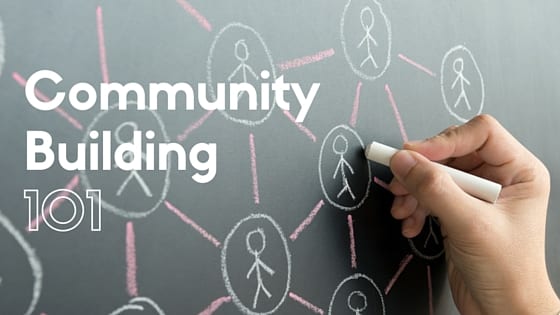Are you a new coworking space or a more traditional serviced office space provider interested in dipping your toe into community building? This one’s for you.
IF WORK IS DIGITAL, WHY DO WE STILL GO INTO THE OFFICE?
Community building is a hot topic. You might think that this is a squishy concept that only those emotional Millennials care about. In reality, we are all fundamentally social creatures that have craved human interaction since the begging of time. That is why, as a recent Harvard Business Review article summarizes…
“What early digital commentators missed is that even if we can work from anywhere, that does not mean we want to. We strive for places that allow us to share knowledge, to generate ideas, and to pool talents and perspectives. Human aggregation, friction, and the interaction of our minds are vital aspects of work, especially in the creative industries. And that is why the quality of the physical workplace is becoming more crucial than ever — bringing along watershed changes.”
THEY COME FOR THE SPACE AND STAY FOR THE PEOPLE
People may have a number of reasons for joining a shared workspace and they may put labels on tangible needs like the need for meeting space, the need for a professional environment, the need for a productive work environment free of kids and laundry, but the underlying need is likely to be around people. We like to say “They come for the space and stay for the people.” As shared workspaces proliferate, community will be your sustainable competitive advantage and your retention tool.
SO WHERE TO START WITH COMMUNITY BUILDING? START WITH THE END IN MIND, BUT LOOK INTERNALLY FIRST
1. Review your nomenclature – You and your staff will need a mindset shift from thinking of the people in your space as clients to treating them like “members.” New nomenclature can help to ingrain this transition. Start calling them members in emails, brochures, on the website, in social media posts.
2. Consider your staff titles – Do they reflect a purely operational or service function? Or do they reflect a role of facilitating and connecting?
3. Be intentional about the small talk – What types of conversations do your staff have with your members? Do they talk about the weather or do they ask questions about their business, what resources they might be looking for, what new skills they’re learning?
LOOK FOR WAYS TO SIGNAL COMMUNITY TO YOUR MEMBERS
You don’t have to go over the top to start this transition into blending your professional, hospitality-focus into a more people/community-focused approach. Start simple:
1. Create a member board – you might want to do this online but consider also going old school and hanging photos with names and Linkedin URLs somepace visible – like by the printer or near the caffeine. Hanging photos of people in the space attached to some sort of identifier and personal info signals that you want them to know each other and to find common ground and to interact. It also sends this message to potential members and you can bet that today’s workplace consumer sees WeWork ads in their Facebook feed about 79 times a day and they are being sold community as a strong element of shared workspace.
2. Host events – Again, no need to break the budget on catering and entertainment. Nor do you need to install kegs. Start hosting regular (weekly is ideal, monthly a great start), simple to orchestrate, un-intimidating social activities such as a happy hour or a potluck lunch. You might have to experiment with what works best for your crowd. They may be totally unwilling to leave their desks for lunch but more than happy to grab a cold one at the end of the day.
3. Make connections – Carrie mentioned that she’s looking for a social media expert and Dan happens to run a social media marketing agency? Make an intro! Jill has a Goldendoodle at home and so does Kyle? Make sure they swap iphone photos!
If you haven’t listened to the podcast sponsored by the GWA, check out the episode with Keith Warner from Pacific Workplaces as the guest. He shares their experience in moving toward a more community-focused approach.




